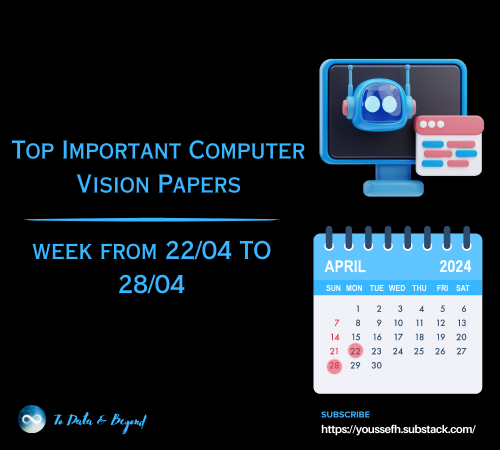Unboxing Weights, Biases, Loss: Hone in on Deep Learning
Last Updated on November 20, 2023 by Editorial Team
Author(s): Mainak Mitra
Originally published on Towards AI.
Deep learning is a type of machine learning that utilizes layered neural networks to help computers learn from large amounts of data in an automated way, much like humans do. At a high level, deep learning models contain interconnected groups of neurons that are loosely modeled after the human brain. These neurons receive inputs, perform mathematical computations, and transmit signals through the network.
Through a process called training, the neurons learn by continuously refining the strengths of connections between each other. Training data consisting of many examples is fed through the network. Based on the actual output versus the expected output, the model tweaks its internal parameters in order to minimize error. This allows the model to gradually improve at tasks such as image recognition, natural language processing, and predictive analytics.
This highly complex training process is powered by a set of fundamental building blocks, including weights, biases, loss functions, activation functions, and an algorithm called backpropagation. Weights and biases determine how strongly inputs influence the network’s predictions. Loss functions guide learning by measuring errors. Activation functions introduce non-linear patterns. And backpropagation efficiently calculates how to adjust everything else.
In this article, we will breakdown each concept in greater detail. We will explain intuitively what each one means and how it contributes to the deep learning process. Just as importantly, we will provide guidance on choosing the appropriate implementations for different types of deep learning problems and applications. By understanding the foundation, readers will gain insights to build more effective models.
Weights
Weights are the learnable parameters that govern the strength of connections between neurons in a neural network. A connection is modeled by a weight, which determines how much information from a neuron is passed to the next during forward propagation.
By tuning weights during training, a neural network refines its internal representations of the input data. Weights play a key role in allowing the network to learn and represent complex patterns in a way that supports accurate predictions or classifications. As weights are adjusted, the network develops an increasingly sophisticated understanding of the problem domain.
Imagine a simple neural network with three layers — an input layer representing the features of our dataset, a hidden layer to learn representations of the input, and an output layer for predictions.
Here, we can see that wa1,wa2,wa3,wa4 are weights assigned to the connections of the 1st node of the input layer, wb1,wb2,wb3,wb4 are weights assigned to the connections of the 2nd node of the input layer, and so on.
Between each layer are weights that control the strength of signals passing from one neuron to the next. During forward propagation, a neuron’s input is the weighted sum of all signals from the previous layer.
These weights are what allow the network to modify its behavior — by increasing a weight, that connection contributes more strongly to later outputs, assimilating that feature’s impact. Conversely, reducing a weight dampens a feature’s influence.
Through backpropagation, the learning process provides feedback to tweak weights up or down according to their role in minimizing errors. Over time, high-impact weights rise to properly amplify useful patterns, while less predictive connections decline in strength.
During training, a neural network randomly initializes its many connection weights before analyzing examples to calculate errors and optimize its performance. Through iterative adjustments altering weights proportionally to their contribution to mistakes, the network selectively strengthens inputs correlated to labels while weakening less useful features. This process of reinforcement learning allows the network to autonomously focus on the most diagnostic patterns through collaborative self-organization across its nodes.
We can also explore how initial weights impact learning. With values too large or small, the network may struggle to train effectively. But properly scaled weights allow insights to emerge from data smoothly. Tinkering with weights gives a window into how neural networks develop an increasingly sophisticated view of problems.
Bias
Beyond just weights, another crucial component enables neural networks to learn effectively from intricate real-world patterns — bias. While weights determine connection strengths between neurons, bias plays a supporting role just as critical for success.
We can think of bias as a tunable offset that grants networks flexibility. When inputs first reach a neuron during predictions, bias acts like a subtle background volume that lifts or lowers activation levels even before weights take over. This simple numeric tweak has profound impacts.
With bias, predictions can emerge and adapt even when certain input features are muted or inconsistent in the training data. The network gains leeway to detect useful relationships regardless of the specific characteristics presented. Without this flexibility from bias, models would struggle to generalize beyond exact sample variations.
Bias also assists the activation function, which determines output levels for each neuron. This numeric calculation acts as the neuron “firing” or not based on combined input signals. Bias serves as a consistent term that allows activation functions to subtly shift left or right on the input scale.
Through tiny shifts prompted by bias, activation functions become more or less sensitive to detecting activation patterns. This fine-tuning capability proves critical for learning intricate real-world patterns that exist across a wide swath of input conditions. It lets networks perceive signals even amid background noise.
In noisy real data, bias safeguards networks’ ability to discern the forest from the trees. Rather than latching onto surface inconsistencies, bias cultivates an ability to identify robust high-level patterns. With their flexibility, networks properly generalize knowledge toward new situations, avoiding expectations that are too narrow or broad.
To visualize bias, imagine a brain cell judging sport if its inputs say “baseball” versus “basketball.” Weights connect conclusions to each clue.
Without bias, this cell could only consider exact copies of evidence seen before. But with bias as a subtle “volume knob” for each judgment, flexibility emerges. The cell may now recognize similar scenarios, even if clues are softer or foggier than training samples.
To appreciate real effects, think of judging photos — without bias, one may judge all blurry pics poorly. However, experienced judges like ourselves can still recognize subjects, discerning blurred trees from unclear faces.
Bias helps neural detectors smoothly spot digits even on sparse doodles, just as experience grants flexibility. Predictions can accommodate varied scenarios, not just duplicate prior views.
Strategies for Monitoring and Mitigating Bias in a Model
- Regularization Techniques: Employ regularization methods like L1 or L2 regularization on biases. This helps prevent biases from becoming too large during training, mitigating the risk of overfitting.
- Bias Correction: Periodically evaluate bias values during training to identify potential issues. If biases are converging to extremely high or low values, it might be necessary to adjust the learning rate or explore alternative optimization techniques.
- Diversity in Training Data: Ensure training data is diverse and representative to minimize bias towards specific subsets. Biases can inadvertently develop based on the distribution of the training data, leading to suboptimal generalization.
Strategies for Weight and Bias Initialization.
Normal Distribution Initialization
Mathematical Expression: W∼N(μ,σ ^2)
- Weights are sampled from a normal (Gaussian) distribution with mean (μ) and standard deviation (σ).
- Suitable for initializing weights, especially in shallow networks.
Implementation (TensorFlow):
import tensorflow as tf
initializer = tf.keras.initializers.RandomNormal(mean=0.0, stddev=0.1)
Uniform Distribution Initialization:
Mathematical Form: W∼U(a,b)
- Weights are sampled from a uniform distribution between a and b.
- Useful when you want weights to explore a wider range initially.
Implementation (TensorFlow):
import tensorflow as tf
initializer = tf.keras.initializers.RandomUniform(minval=-0.1, maxval=0.1)
Zero Initialization:
Mathematical Form:W=0
- All weights are initialized to zero.
- Rarely used in practice due to symmetry issues.
Implementation (TensorFlow):
import tensorflow as tf
initializer = tf.keras.initializers.Zeros()
One Initialization:
Mathematical Form:W=1
- All weights are initialized to one.
- Similar to zero initialization and is not commonly used.
Implementation (TensorFlow):
import tensorflow as tf
initializer = tf.keras.initializers.Ones()
Xavier/Glorot Initialization:
Mathematical Form:
- Addresses vanishing/exploding gradient problems.
- Scales the weights based on the number of input and output neurons.
Implementation (TensorFlow):
import tensorflow as tf
initializer = tf.keras.initializers.GlorotNormal()
He Initialization:
- Similar to Xavier but only considers the number of input neurons.
- Commonly used with ReLU activation.
Implementation (TensorFlow):
import tensorflow as tf
initializer = tf.keras.initializers.HeNormal()
These initialization methodologies play a vital role in the training of deep neural networks. The choice of the appropriate method depends on the specific characteristics of the task, the chosen activation functions, and the architecture of the neural network. Experimenting with different initialization strategies is often necessary to find the most effective approach for a given problem.
Loss Function
Loss functions act as a vital guidance system for neural networks during their learning journey. As models train on sample data, the loss function works behind the scenes to continuously evaluate model performance.
We can think of it as a precision measurement tool, carefully quantifying the degree of divergence between a model’s predictions and reality. By determining prediction errors on each training step, the loss gives a clear picture of how well or poorly the network is currently performing its assigned task.
Minimizing this loss value becomes the prime objective as training unfolds. Lower loss suggests stronger alignment with the observed patterns in data — in effect, it proxies the model’s accuracy. The optimizer works to stealthily steer weights down more accurate pathways through backpropagation, nudging the network toward ever-improving predictions step-by-step.
Crucially, the choice of loss metric must suit the problem at hand. Some work best for regression, others for classification. The appropriate tool ensures training smoothly shapes the model into something harmonious with the inherent contours of each unique challenge. A well-calibrated loss function, tailored to the details, allows insights to be clear.
Types of Loss Functions.
Mean Squared Error (MSE): Commonly used in regression tasks, MSE calculates the average squared difference between predicted and actual values. It penalizes larger errors more heavily, making it sensitive to outliers.
Cross-Entropy Loss: Predominantly employed in classification problems, cross-entropy measures the dissimilarity between predicted and true probability distributions. It’s particularly effective when dealing with categorical data and is less sensitive to confident misclassifications than other loss functions.
Huber Loss: A hybrid of MSE and absolute error, Huber loss mitigates the sensitivity to outliers by using MSE for small errors and absolute error for larger errors.
- n — the number of data points.
- y — the actual value of the data point. Also known as true value.
- ŷ — the predicted value of the data point. This value is returned by the model.
- δ — defines the point where the Huber loss function transitions from a quadratic to linear.
Binary Cross-Entropy: Specifically designed for binary classification, this loss function is suitable when the output is a probability score for one of the two classes.
Categorical Cross-Entropy/ Softmax loss: Extending from binary cross-entropy, this loss function is tailored for multi-class classification tasks. It measures the discrepancy between predicted and true class probabilities.
Application of Different Loss Functions
- Mean Squared Error (MSE): Imagine a regression task predicting house prices. MSE would penalize the model more for large prediction errors, making it strive for an overall balanced accuracy.
- Cross-Entropy Loss: In a classification scenario, such as identifying handwritten digits, cross-entropy loss ensures the model focuses on correctly assigning high probabilities to the true class, making it adept at distinguishing between classes.
- Huber Loss: When dealing with data containing outliers, like temperature prediction with occasional extreme values, Huber loss can provide a compromise between the robustness of absolute error and the sensitivity of MSE.
- Binary Cross-Entropy: For binary classification tasks like spam detection, where the outcome is either spam or not, this loss function is well-suited to guide the model’s learning.
- Categorical Cross-Entropy: In the context of multi-class classification, such as image recognition with multiple object classes, categorical cross-entropy ensures the model learns to predict the correct class among several possibilities.
Impact of Choice of Loss Function on Training Dynamics
- Convergence Speed: The choice of loss function can influence how quickly the model converges during training. Some loss functions may guide the optimization process more efficiently, accelerating convergence.
- Robustness to Outliers: Loss functions like Huber loss can make the model less sensitive to outliers, enhancing its robustness in the face of noisy data.
- Task-specific Performance: Different tasks demand different loss functions. Selecting an appropriate loss function tailored to the problem at hand can significantly enhance the model’s ability to generalize and make accurate predictions.
How to Choose the Right Loss Function
Considerations Based on Task: Classification, Regression, etc.:
- Classification Tasks: For problems where the goal is to classify input data into discrete categories (e.g., image recognition, spam detection), cross-entropy loss is often a suitable choice. It naturally aligns with the probabilistic nature of classification problems.
- Regression Tasks: When the objective is to predict a continuous numerical value (e.g., house price prediction), mean squared error (MSE) is a common and effective choice. It emphasizes minimizing the average squared differences between predicted and true values.
Balancing Accuracy and Interpretability in Selecting a Loss Function
- Accuracy Emphasis: If the primary goal is to optimize for precise predictions without much concern for the specific probability distribution, a loss function like MSE or absolute error might be preferable. These emphasize minimizing the differences between predicted and actual values.
- Interpretability Focus: In cases where we understand the probability distribution or the certainty of predictions (e.g., medical diagnosis), a loss function like cross-entropy might be more suitable. It encourages the model to not only predict the correct class but also provide well-calibrated probability estimates.
As you navigate this landscape, let curiosity be your guide and experimentation be your compass. The world of neural networks awaits your creative insights and innovative solutions. Happy exploring!
Join thousands of data leaders on the AI newsletter. Join over 80,000 subscribers and keep up to date with the latest developments in AI. From research to projects and ideas. If you are building an AI startup, an AI-related product, or a service, we invite you to consider becoming a sponsor.
Published via Towards AI

 Logo:
Logo:  Areas Served:
Areas Served: 









